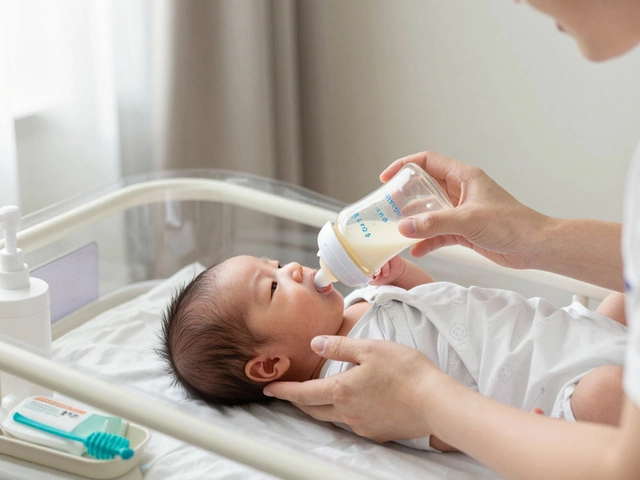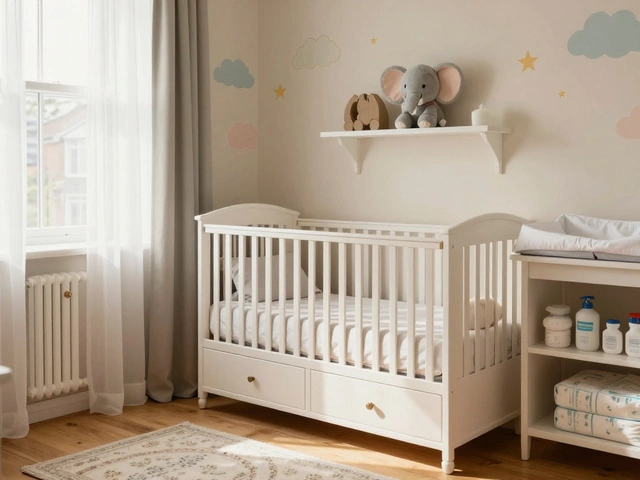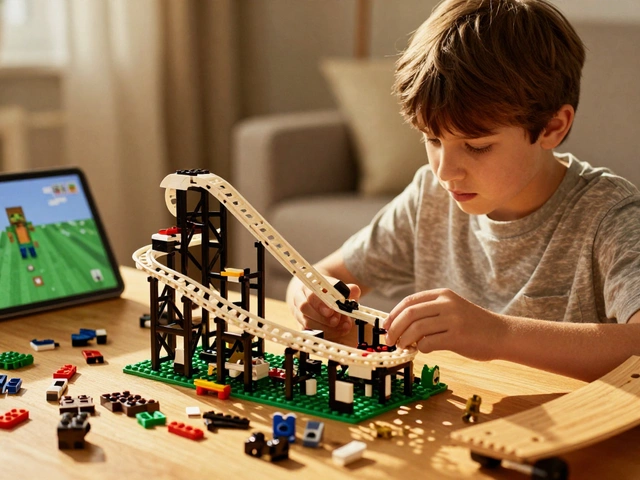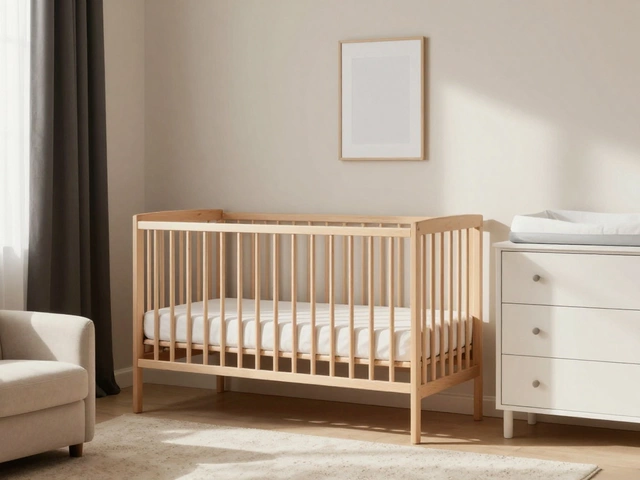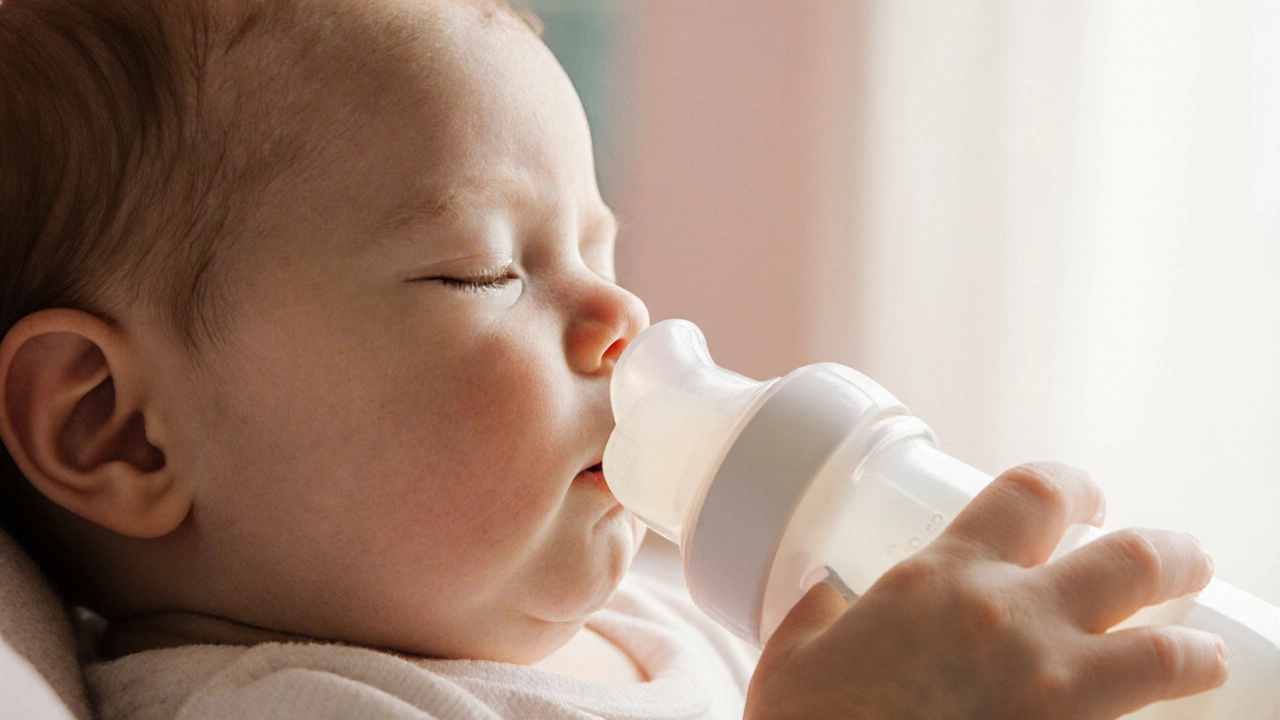
Baby Bottle Selector
Recommended Bottle:
TL;DR
- Look for nipples that are wide‑shaped, soft, and have multiple flow options.
- Anti‑colic vent systems are a must for a calm baby.
- Top 5 bottles in 2025: PhilipsAventNatural, Dr.Brown’sOptions+, Comotomo, TommeeTippeeClosertoNature, MAMReadytoUse.
- Match nipple flow to your baby’s age and preference; start slow, then adjust.
- Practice paced‑feeding to keep the bottle feel close to a breast.
When a newborn’s latch isn’t perfect or a parent needs a break, the bottle you pick can make or break the switch. A breast‑like baby bottle is a bottle designed to imitate the natural feel and flow of a mother's breast, helping babies transition between breast and bottle smoothly. Parents ask, “Which bottle feels the closest to the breast?” because they want to keep feeding calm, reduce nipple confusion, and avoid extra fuss.
Why Breast‑Like Bottles Matter
Babies are born with a reflex that lets them suck efficiently at the breast. When the nipple shape, flow, or texture is too different, they may gulp, gasp, or become frustrated. Studies from the Royal College of Paediatrics show that a smooth transition can lower the risk of early weaning and keep milk supply stable. A bottle that mimics the breast also supports premature infants who need extra time to develop a strong suck.
Key Features to Look For
Every bottle isn’t created equal. Here are the attributes that turn a regular bottle into a breast‑like experience:
- Wide, breast‑shaped nipple - The more the nipple resembles a nipple in shape and flexibility, the easier the baby adjusts.
- Multiple flow options - Newborns need a slow flow; older infants can handle medium or fast. Adjustable vents let you fine‑tune the speed.
- Anti‑colic vent system - Air‑reduction valves keep gas from entering the bottle, preventing colic symptoms.
- Material - BPA‑free silicone or soft latex feel closer to skin than hard plastic.
- Ease of cleaning - Fewer parts mean less residue where bacteria can hide.
Top 5 Bottles in 2025
Below are the five bottles that consistently rank highest for breast‑like feel, based on parent reviews, pediatrician recommendations, and independent testing labs.
PhilipsAventNatural features a soft, wide‑diameter nipple with a natural‑flow valve that mirrors a breast’s milk flow. The anti‑colic mesh vent sits inside the bottle, so the air bypasses the nipple. It’s available in newborn (0‑3months) and 1‑month flow options.
Dr.Brown’sOptions+ combines a patented vent system with a breast‑shaped nipple that can be swapped between slow, medium, and fast flows. The vent reduces the vacuum that can make a baby gulp, which is why many hospitals still recommend it for pre‑terms.
Comotomo Baby Bottle uses a silicone, ultra‑soft nipple that feels almost like real skin. Its wide‑neck design lets babies latch naturally, and the dual‑vent system prevents colic without adding bulk.
TommeeTippeeClosertoNature mimics the breast’s natural shape with a breast‑like nipple that has a ‘starter‑flow’ and a ‘full‑flow’ setting. The built‑in air‑vent reduces hiccups and gas.
MAMReadytoUse offers a soft, flexible nipple made from medical‑grade silicone. Its anti‑colic valve sits close to the base, keeping the milk temperature stable and the flow consistent.
Quick Comparison Table
| Bottle | Nipple Flow Options | Anti‑Colic System | Material | Average Price (GBP) |
|---|---|---|---|---|
| PhilipsAventNatural | Slow, Medium | Mesh vent inside bottle | BPA‑free plastic + silicone | £9.99 |
| Dr.Brown’sOptions+ | Slow, Medium, Fast | Vent in nipple + bottle base | Polypropylene + silicone | £12.49 |
| Comotomo | Slow, Medium | Dual vent (bottom & top) | Silicone (soft) | £13.95 |
| TommeeTippeeClosertoNature | Starter, Full | Integrated air‑vent | Plastic + silicone | £8.79 |
| MAMReadytoUse | Slow, Medium, Fast | Valve near base | Silicone & BPA‑free plastic | £10.50 |
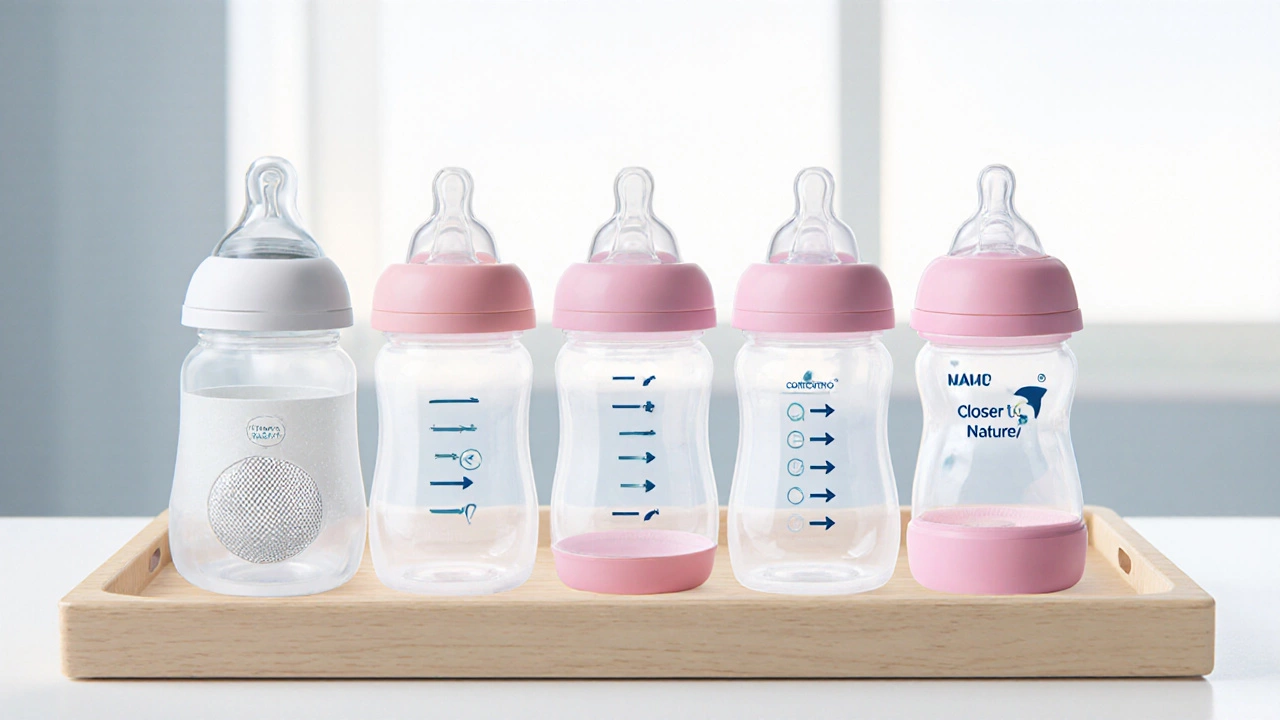
How to Choose the Right One for Your Baby
Every baby’s preference is personal. Use these decision points:
- Age & flow: Newborns need the slowest flow. If you’re unsure, start with a bottle that offers a “starter” setting.
- Material sensitivity: Some infants react to latex‑type nipples. Silicone is hypo‑allergenic.
- Cleaning routine: If you’re short on time, pick a bottle with fewer parts - TommeeTippee scores high here.
- Budget vs. features: The price gap isn’t huge; the biggest differences are vent design and nipple softness.
Tips for a Smooth Switch
Even the best bottle won’t work if you rush the transition. Follow these tried‑and‑true steps:
- Start with a feeding when your baby is calm and not overly hungry.
- Hold the bottle at an angle that mimics the breast - angled upward so the nipple fills with milk before the baby latches.
- Use a “paced‑feeding” rhythm: give the baby a sip, then pause for a second, letting them swallow and breathe.
- Warm the milk to body temperature (around 37°C). Babies associate that warmth with the breast. \n
- If the baby refuses, switch back to the breast for a few minutes, then try the bottle again. Consistency beats force.
Common Pitfalls and How to Avoid Them
Even seasoned parents stumble. Here are the most frequent errors and quick fixes:
- Choosing the wrong flow too early - Leads to choking or frustration. Always start slower; you can increase later.
- Skipping the vent setup - Without the anti‑colic valve, air gets trapped, causing gas. Double‑check that the vent is assembled correctly.
- Using a bottle that’s too rigid - Hard plastic nipples can feel cold and unnatural. Silicone nipples keep the temperature stable.
- Neglecting proper cleaning - Residue builds up in nipple holes, altering flow. Sterilize weekly and rinse after each use.
Final Thoughts
Finding a bottle that feels close to the breast isn’t about chasing the most expensive model; it’s about matching nipple shape, flow flexibility, and anti‑colic performance to your baby’s needs. The five bottles highlighted above cover the spectrum of what a modern parent might require. Pair the right bottle with paced‑feeding techniques, and you’ll keep your baby calm, reduce nipple confusion, and protect your milk supply.
Frequently Asked Questions
What makes a bottle “breast‑like”?
A breast‑like bottle uses a wide, soft nipple that mimics the shape and flexibility of a real breast, offers multiple flow settings, and includes an anti‑colic vent to prevent gulping.
Should I start with a slow or medium flow?
Always start with the slowest flow. Babies can adjust to faster flows later, but moving from fast to slow is difficult and can cause frustration.
Are silicone nipples better than latex?
Silicone is hypo‑allergenic, retains heat longer, and is easier to clean. Latex can degrade over time and may trigger sensitivities in some infants.
How often should I sterilize the bottle?
Sterilize the bottle and nipple at least once a day (boiling, steam, or UV). After each feed, rinse thoroughly and wash with warm, soapy water.
Can a breast‑like bottle help prevent nipple confusion?
Yes. When the nipple shape and flow closely match the breast, babies are less likely to become frustrated or develop a preference for one feeding method over the other.
Is it okay to mix formula and expressed breast milk in a breast‑like bottle?
Absolutely. The bottle’s design doesn’t affect the nutritional content. Just follow standard storage guidelines for each milk type.


